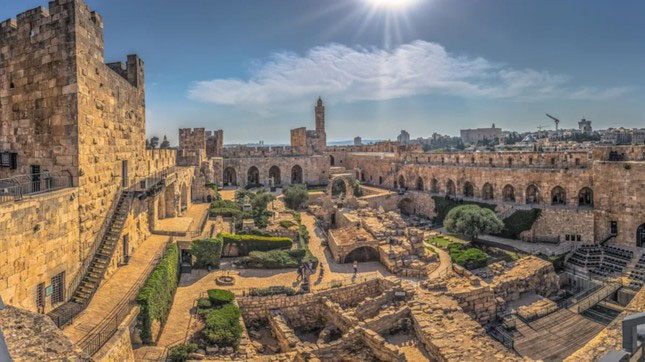Professor Yosef Garfinkel, a renowned archaeologist in Israel, asserts that he has discovered a network of ancient cities that belonged to the empire of King David. He believes that this biblical figure was not merely a shepherd but a strong leader. His new research, recently published in the Jerusalem Archaeological Journal, has immediately sparked considerable debate.
Professor Yosef Garfinkel, a professor of Prehistoric Archaeology and Biblical Archaeology at the Hebrew University of Jerusalem, argues that there is a network of five fortified cities surrounding Jerusalem dating back to the early 10th century BCE, approximately 200 years earlier than previous studies suggested. If his claims about these cities are correct, it implies that these extensive settlements were part of the Kingdom of Judah and were established during the reign of King David.
According to Garfinkel’s research, these five cities exhibit similar designs, particularly with two parallel walls surrounding the inner part of the city, indicating they are part of a cohesive network. They were also connected through a series of organized roads, highlighting their deep connections as part of the kingdom.

Image of the Tower of David, a famous ancient fortress located near the Jaffa Gate entrance of the Old City of Jerusalem. (Photo: Iifl Science).
There is very little historical information about King David, and scholars are engaged in intense debates about whether his presumed dynasty truly existed or was merely a legend.
According to the Bible, King David was a young shepherd who gained fame after slaying the giant Goliath. He later became the king of the tribe of Judah and eventually the king of all the tribes of Israel. Garfinkel’s new study aligns more closely with the biblical interpretation of King David as a powerful leader who controlled a prosperous ancient empire, including Jerusalem.
“Some people argue that David ruled only a small village and did not have a kingdom, while I believe there existed a kingdom with fortified cities a day’s walk from Jerusalem,” Garfinkel stated in an interview with Haaretz (Israel).
“I believe that David’s kingdom included Jerusalem, Hebron, and several surrounding cities: that was the urban center of the Kingdom of David. I think that is a fact,” Garfinkel affirmed.
However, some experts express skepticism about this theory. Other archaeologists argue that the conclusions in his latest work are limited and reflect an effort to validate the biblical narrative.
Overall, this is not the first time someone has claimed to find compelling evidence of King David’s dynasty.
“There are many small details I disagree with, and the generalization over a vast period is problematic,” said Professor Aren Maeir, an archaeologist at Bar Ilan University, in an interview with The Times of Israel.
“It’s like when a fisherman tells you about the fish he caught, and with each retelling, the fish gets bigger. Was it a mackerel or a blue whale? If you read the Bible and understand it literally, then it’s a blue whale. I think there probably was a small kingdom in Jerusalem, but we do not know the extent of its influence,” Professor Maeir remarked.


















































